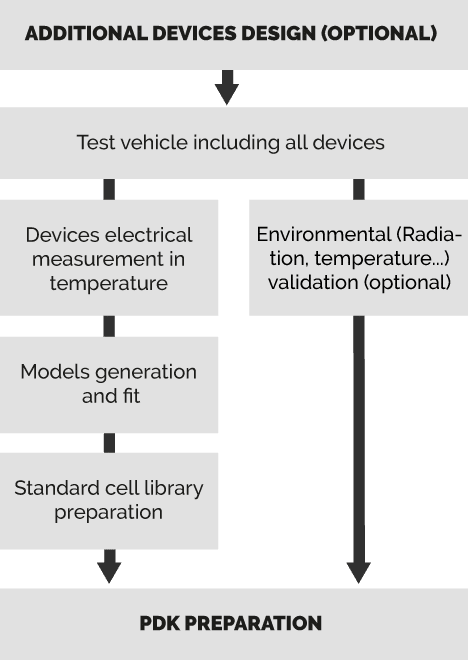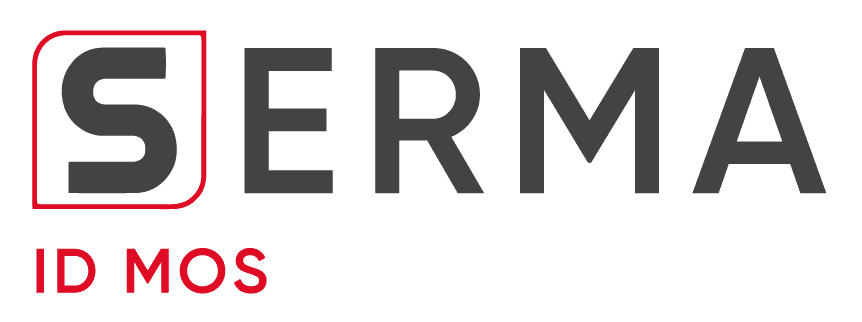Modeling of foundry technologies
While designing ASICs or ASSPs, ID MOS most often uses standard silicon technologies, through the standard simulation models and libraries supplied by our foundry supplier.
Besides that conventional approach applicable for most of the target applications, some specific industrial areas dealing with extra-ordinary environmental conditions request the adaptation or the full-development of specific simulation and design environments, including such items as dedicated modeling, addition of new topologies and preparation of standard cell libraries. Harsh environments are usually connected either with extreme temperatures (needing an extension of the modeling domain of the process) or radiations (space applications, needing the addition of rad-tolerant geometries and corresponding libraries usable for synthesis and place&route).
That complete competence to build a fully packaged design kit from devices to modeling and libraries is an important part of the company’s know-how.


Extreme temperatures
A few applications work at extreme temperatures, either very low (70K, -193°C) or very high (300°C). Under such temperatures, the standard electrical simulation models are not valid anymore as some side effects occur, including variation of transistors threshold, low-temp carrier mobility, and high-temp junction reverse leakages. We handle such application constraints by extending the device modeling based on “test vehicles” (specific chips integrating all the process devices). These devices are electrically measured under the conditions corresponding to the targeted temperature range. From the measurements are generated sets of new equations which will operate the “extended” electrical models. By using the newly-created model library, the ASIC design can be simulated though the extended temperature range.
Rad Tolerant
Radiation tolerance, including the behavior under single events (SEU) and total cumulated dose (TID) is a main issue for some applications in Space operations. In this specific case, the design of most of the technology elementary devices has to be modified and adapted. The corresponding modeling is performed on test vehicles, out of which the created devices will form a new design library.
Such specific modeling process is validated by SEU and TID tests applied on the test vehicles; the outcome is a rad-hard full design kit including analog and digital cells for the targeted technology. This allows further mixed-signal designs with a fully predictable behavior with regards to radiations.

